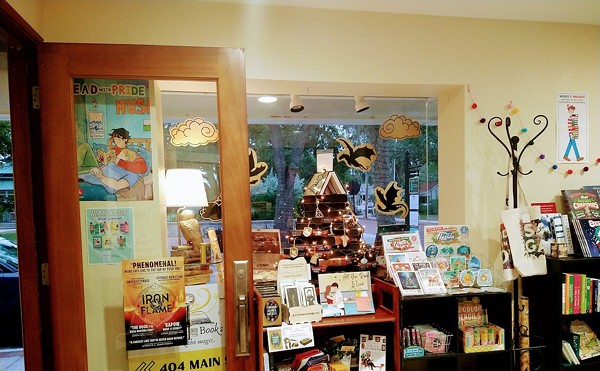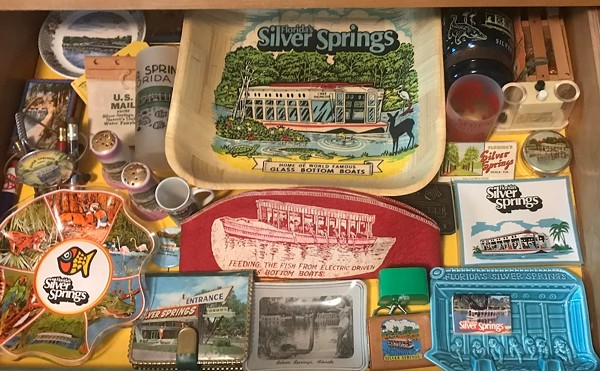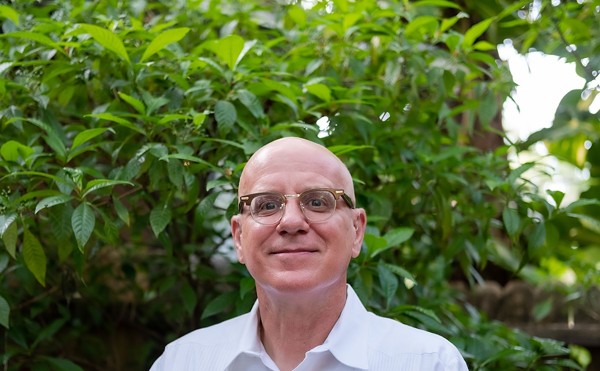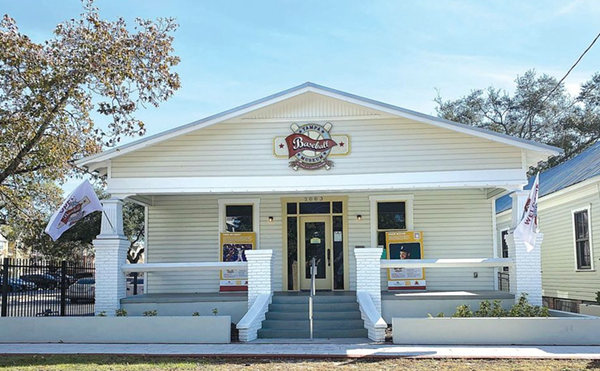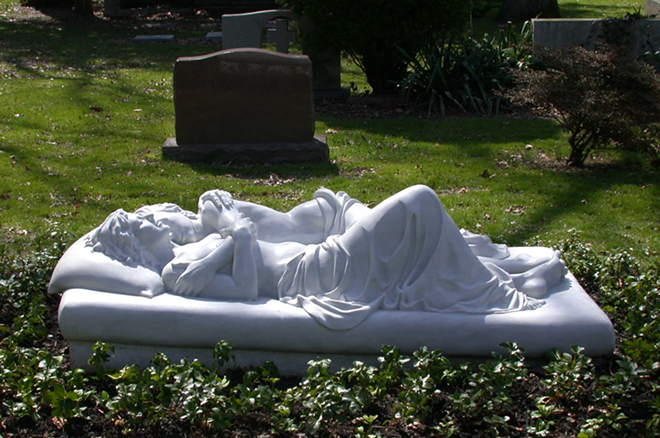
Brooklyn comes to Tampa this week with Patricia Cronin’s many goddesses of love.
Her contemporary room full of classic Aphrodites kicks off the Tampa Museum of Art’s series Conversations With The Collection that will unfold over the next two years, all on the subject of love. Her solo exhibit Patricia Cronin, Aphrodite, and the Lure of Antiquity opens August 16.
A 2006 recipient of the Rome Prize, Cronin spends time in Italy visiting statues, monuments and sites for inspiration mixing classic antiquities with contemporary art practices. She champions women in her research and studio work, uncovering female artists who were passed over in history in favor of men. Cronin’s show echos her ongoing project Shrine For Girls, a series of site-specific sculptural installations in different cities around the world, originally conceived for the 2015 Venice Biennale, reflecting on the global plight of exploited women and girls. Harriet Hosmer, who was considered the best female sculptor in America during the 19th century, was a big inspiration for this show.
Hosmer designed a process that turned limestone into marble. She, like Cronin, also spent a lot of time in Rome. Both ladies were born in Massachusettes. You’ll see pieces of Hosner's in the last room. Patricia Cronin, Aphrodite, and the Lure of Antiquity mixes white marble sculpture and large paintings made with acrylic and sheer tarps creating epic ethereal visions of the goddess of love. The room is wild but serene and ghostly.
She points to an illustration depicting Aphrodite with a bow and arrow.
“That wouldn’t be one of her attributes, a bow and arrow — it’s an 18th-century fantasy,” she remarks.
Cronin was so excited after her trip to Italy, she broke from her training as an oil painter, venturing boldly into acrylics. She bypassed doing mock-ups and just jumped into full-size works, ready to manifest her vision.
“I couldn’t make Aphrodite out of oil paints; she’s born of the sea,” she said. “It’s supposed to be water-based. So I put some plastic down, I put the canvas down, I drew the Aphrodite and started painting. When it dried, I picked it up and put it on the wall because I wanted to see how it was coming along. And then I turned around and looked at the plastic and went, ‘Oh my goodness, this is incredible!’ This was underneath when I painted this.”
“That’s the ghost part!” I remark
“I know! And then I thought, well this is great,” she continues, “There’s this myth of the great male artist, gets inspired by God and their brush stroke is so important. Like, this takes away the artist brushstroke, and I couldn’t have seen what I was doing while I was painting the canvas on top. I love making things where I can’t see what I’m doing while I’m doing it.
“It’s this infusion-of-the-essence type of situation; it’s very satisfying.
“And also with a sculpture you have to make it interesting for 360 degrees, all the way around, cause you want to, hopefully, as the viewer — ‘Oh I wonder what happens next? I wonder what happens next?’ And as you’re moving, you’re rewarded for the effort. Generally, a painting only has to look good from one vantage point. And I finally figured out to make paintings that would maybe inspire a little bit more walking around. Sometimes you get this off-register layering. We’ve got some of her drapery, and then we’ve got some folds from the plastic, then we have the folds from the tarps. And the idea was Aphrodite would be a cult statue that you would go and worship in the temple. What did you ask the gods for? Intervention, help, protection, a good harvest, a safe sea voyage, a good marriage. What do we use tarps for? They’re for protection. We’re trying to care for something that’s valuable to us. So the range of the printed abstraction on top, the ghostlineess, then we’ve got this real statue but she’s a bit of a silhouette, and then we have all this foaming water beneath her and then we’ve got the tarps and they relate to the water. And I think about doing the research, you know, I love these statues, they’re so gorgeous but they’re still a little bit enigmatic; there’s still so much I want know that we don’t know yet.”
Cronin applied this timeless but modern sort of feminine mystique thing with this old heavy statue tradition. It’s not stagnant, and I tell her as much.
“Well — and the thing is — if I just did a painting representing what the sculpture looked like, that wasn’t going to add anything. There’s still this longing for information that happens with the layering I think,” she says.
Cronin’s built that layering right in, and also, it feels really... nice... to be in the room.
“They installed it so beautifully,” she says of the Tampa Museum staff. “It’s very calming, but contemplative.”
In the next room, a replica of her and her partner’s tombstone awaits. It’s a likeness of them sleeping together; the original is on a plot of land she bought in Woodlawn Cemetery in the Bronx — the Père Lachaise of New York. In 2002, before gay marriage was legal, the only legal protections that simulated heterosexual marriage were depressing forms like wills and power of attorney documents. She set out to make the most elegant statement she could.
“So I used a nationalist form, American neo-classical sculpture, to address what I considered a federal failure,” Cronin said. “I bought a burial plot in Woodlawn Cemetery and we had a big unveiling, the whole day was structured like a funeral. An art historian gave a beautiful walking tour of the women of Woodlawn — the tour already existed before we got there. Then we did an unveiling at the gravesite and then we went back to the Woolworth Chapel for a reception and then close family and friends came back to our house, our loft in Tribeca where we had red wine and pizza and watched The Sopranos.”
The show opens Thursday, August 16, with an artist talk at 12:30 p.m.




